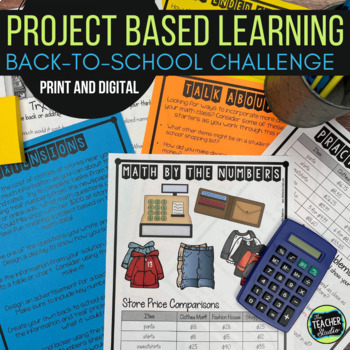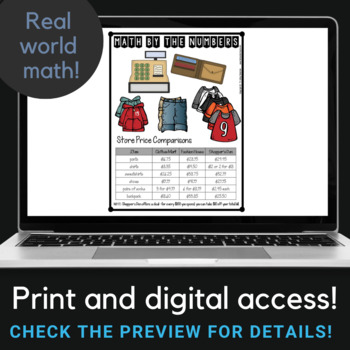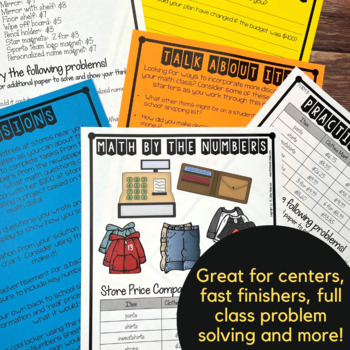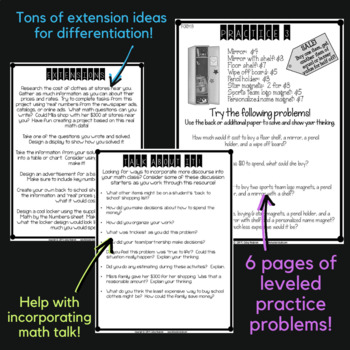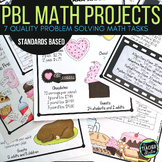PBL Math Problem Solving Project - Back to School Shopping - Print and Digital
- PDF
- Google Apps™

What educators are saying
Also included in
- Are you looking for higher-level math performance tasks and problem solving activities to use with your students? This low prep, low ink AND flexible math bundle is a math problem solving resource that can be used with small enrichment groups or can be tiered so you can use it with your entire classPrice $25.00Original Price $34.65Save $9.65
- Looking for fun AND meaningful back to school activities to use as you head back to start your year? You are going to LOVE this collection of EIGHT BACK TO SCHOOL RESOURCES--low prep to make life easier at this crazy time of year!This bundle includes resources that can be used successfully with graPrice $19.95Original Price $30.95Save $11.00
Description
Are you looking for a high-level, back-to-school math project-based learning/problem solving project to use with your students? Finding quality math tasks that are engaging and low-prep is tough--but I've got you covered!
- Do you want flexibility—a math resource that can be used with small enrichment groups or can be tiered so you can use it with your entire class…but at different levels?
- Do you want your students to be problem solving, thinking creatively, writing and talking about math, and working collaboratively?
- Do you want them working on math in “real world” contexts?
- Do you want to have both PRINT and DIGITAL options available all in one resource?
This may be just what you are looking for!
For years, I have wished and hoped for a resource that would provide my students with high quality, open ended tasks to allow them to apply what they learn to real world situations. Guess what? They are hard to find! So I thought and I thought…and finally, the idea for a flexible, high level series of problems came to me. They can be used whole class…with enrichment groups…for fast finishers…or even in different ways with different students.
This version is PERFECT for back-to-school time and with any group of students because it is all about having the freedom to spend a budget on school supplies and clothes! There are lots of factors to consider--this is not a fill-in-the-blank resource...and is available at two levels--whole dollar amounts only and decimals.
Each resource is based on a different real-world theme--like shopping for back to school clothes--and students need to use the "Math by the Numbers" posters (available in full color to laminate for centers and in black and white for easy copying) to work on a multiple-step, open-ended project.
The activity is tiered so that the same activity is available at different levels. Not only that, but you get additional math practice sheets (also tiered), suggestions for math discussions, extension activities, and more--including digital access!
This version focuses on addition and subtraction with money, multi-step problem solving, and reading tables. It is appropriate for enrichment in second and is ideal for grades 3 and 4 or review for grade 5. I hope you enjoy it--and the flexibility it offers you.
------------------------------------------------------------------------------------------------------
Looking for more Thinker Task resources? Here is the complete list!
Back to School Shopping Problem
A Valentine Celebration Problem
------------------------------------------------------------------------------------------------------
All rights reserved by ©The Teacher Studio. Purchase of this resource entitles the purchaser the right to reproduce the pages in limited quantities for single classroom use only. Duplication for an entire school, an entire school system, or commercial purposes is strictly forbidden without written permission from the author at fourthgradestudio@gmail.com. Additional licenses are available at a reduced price.

